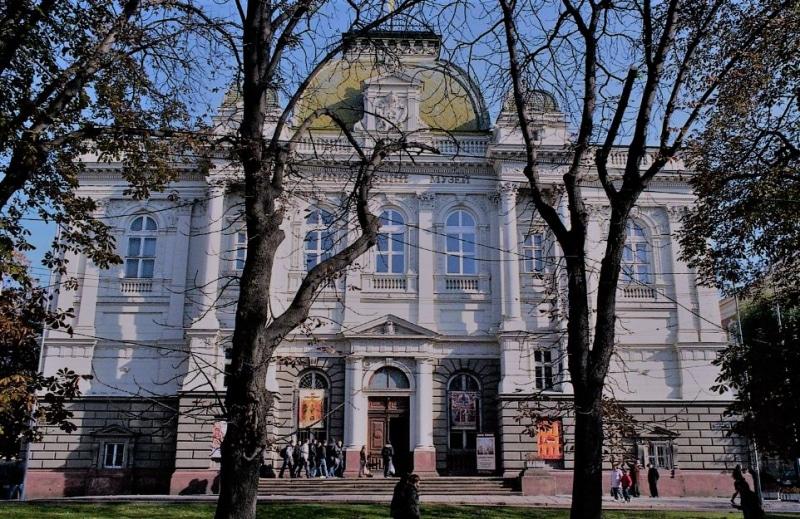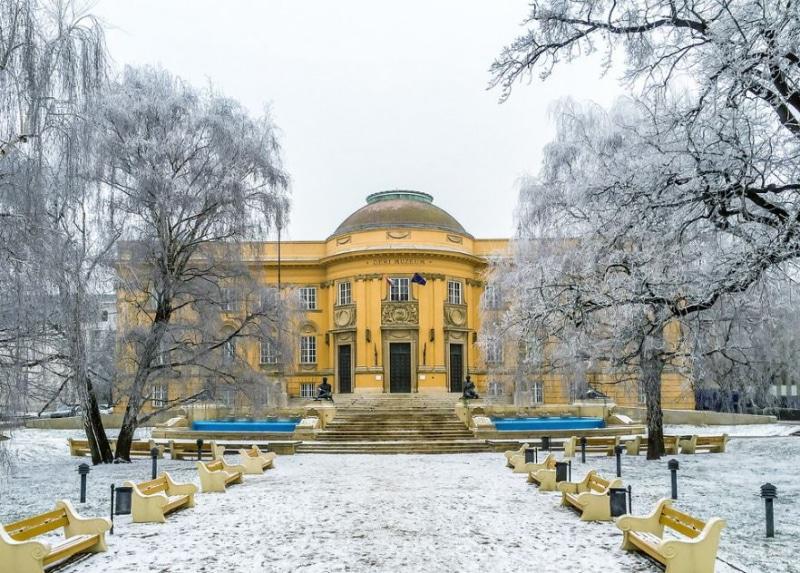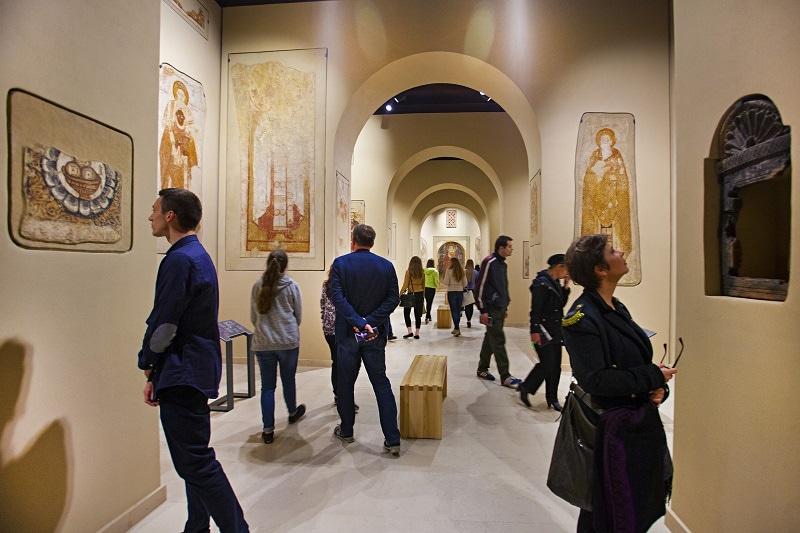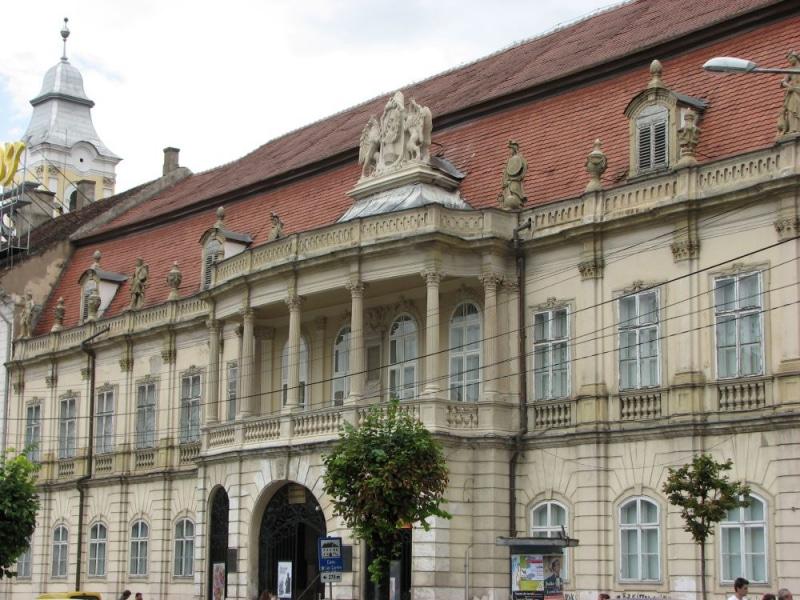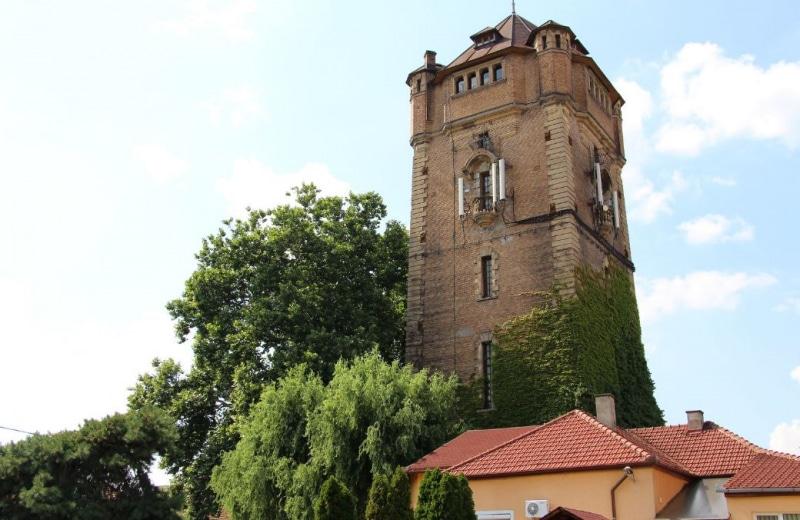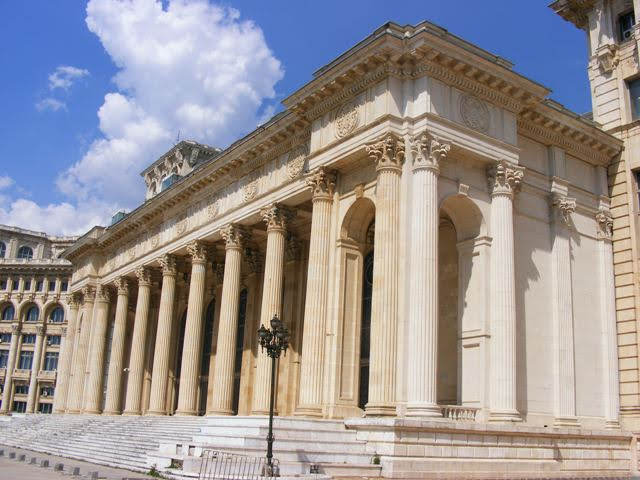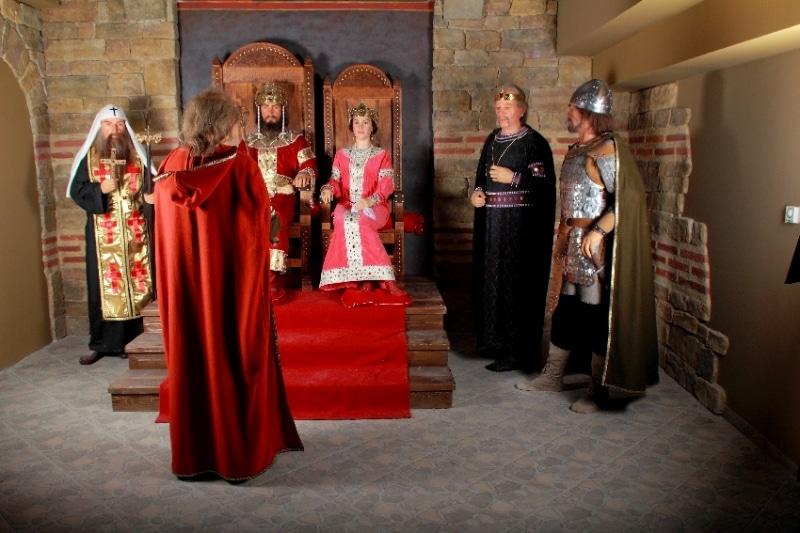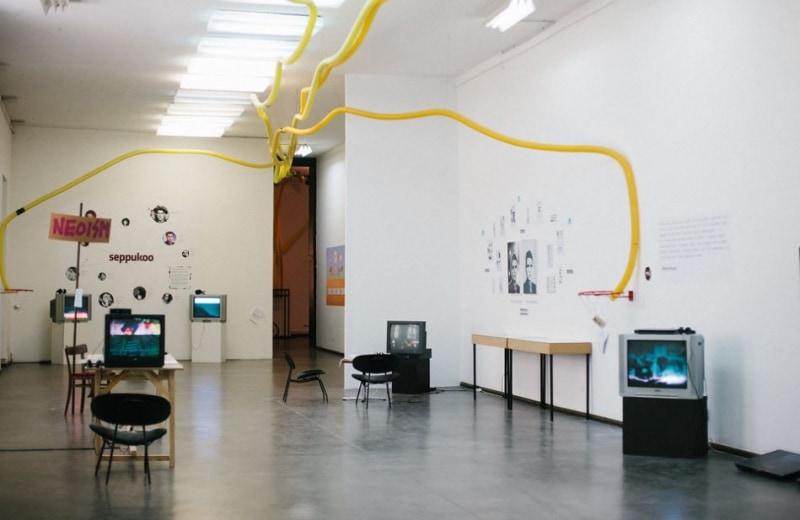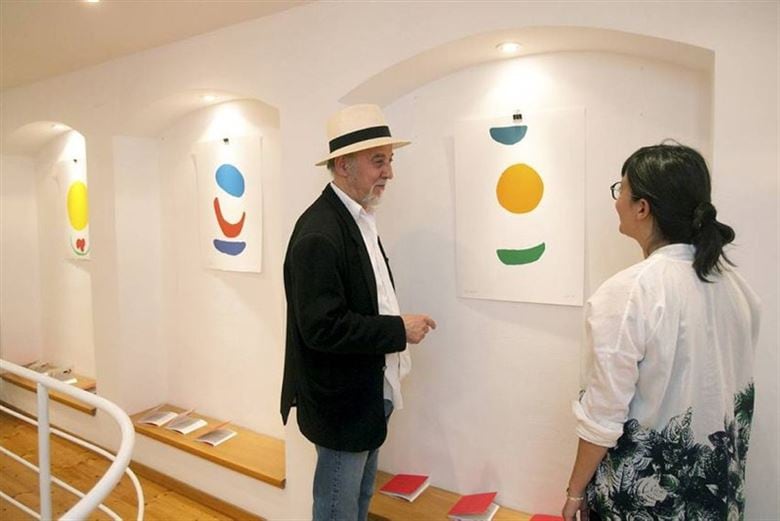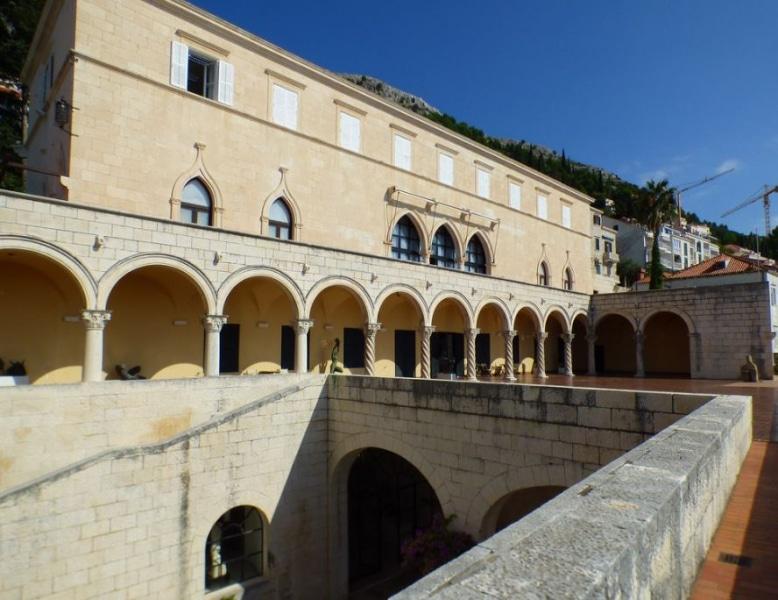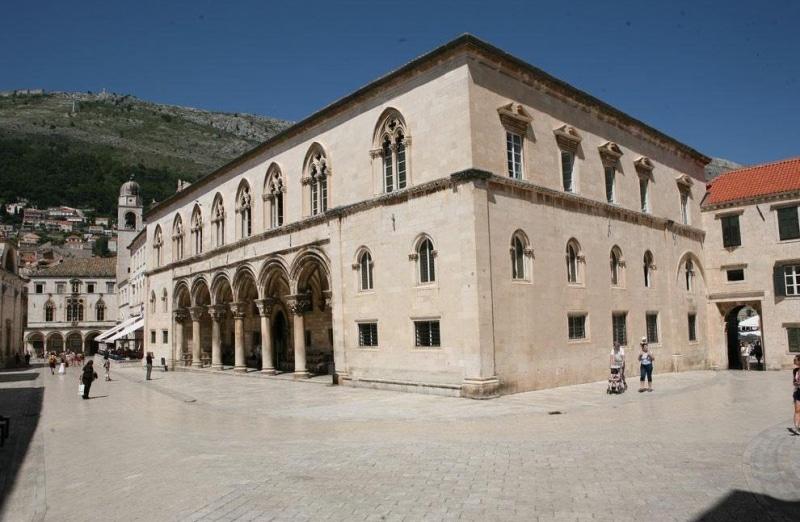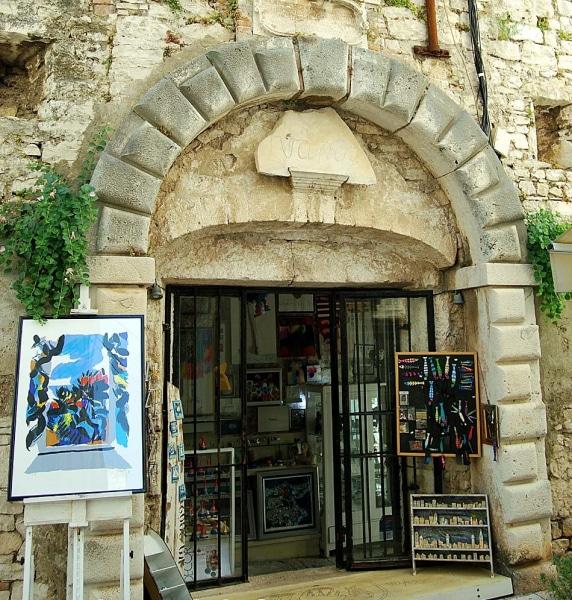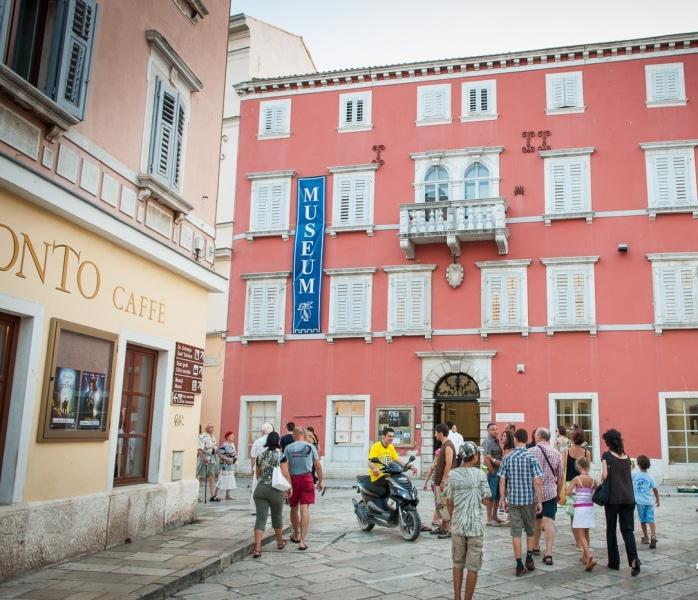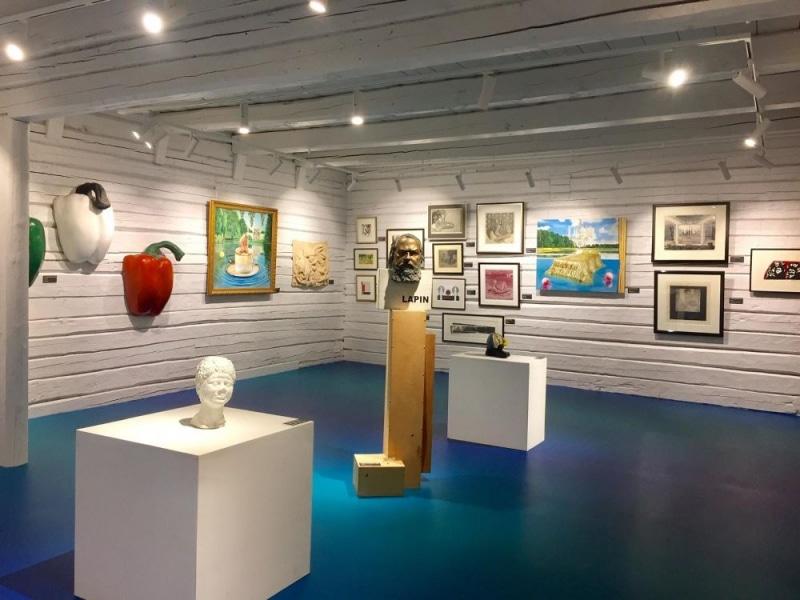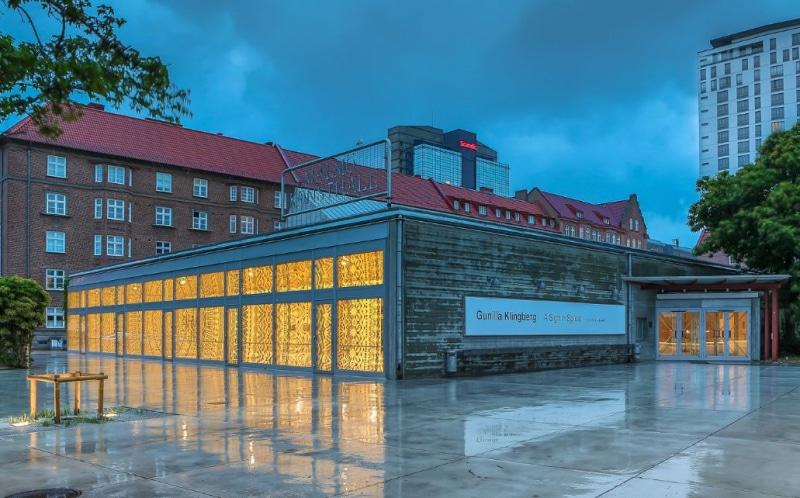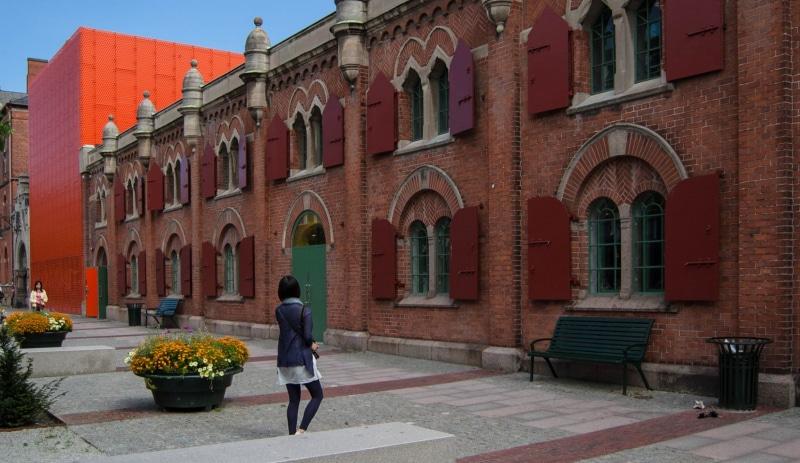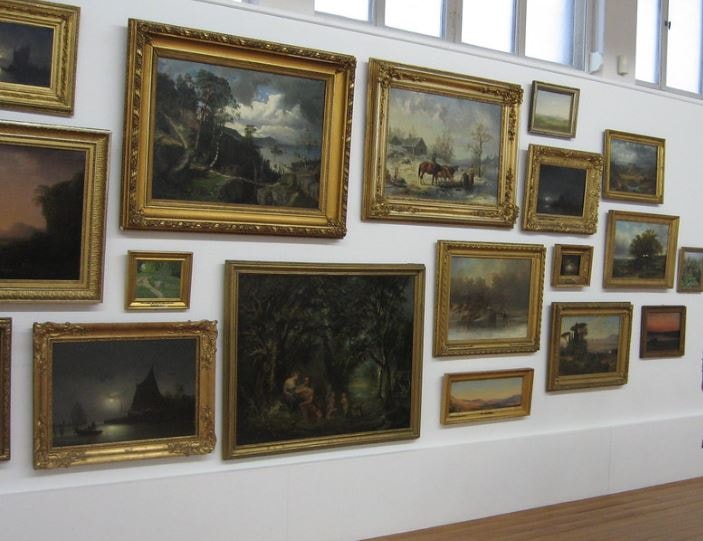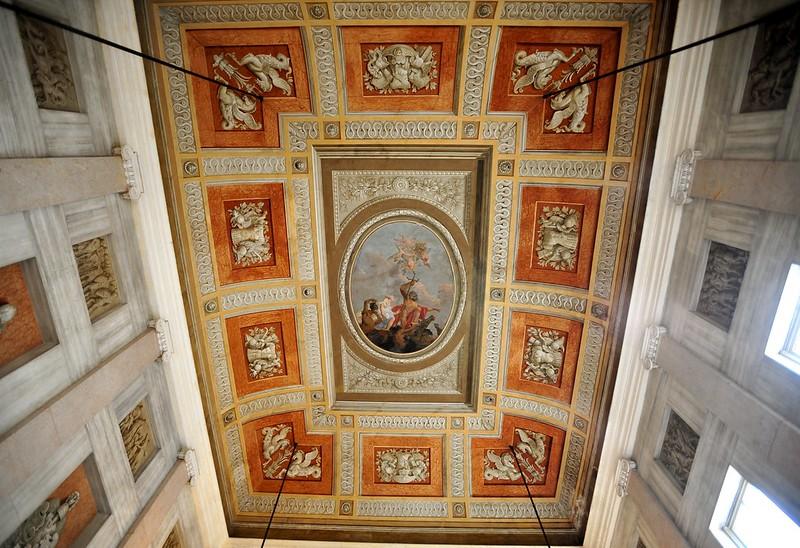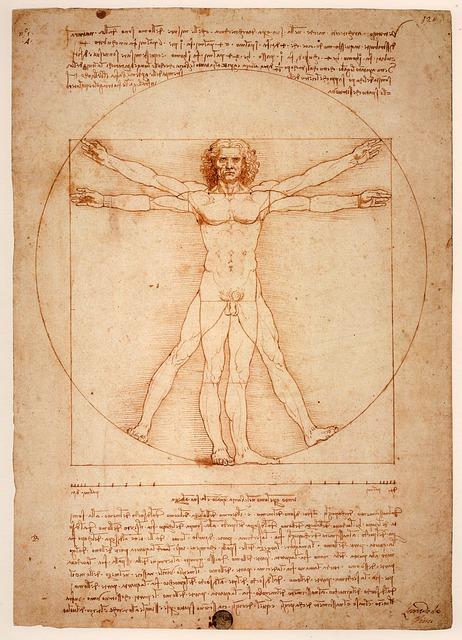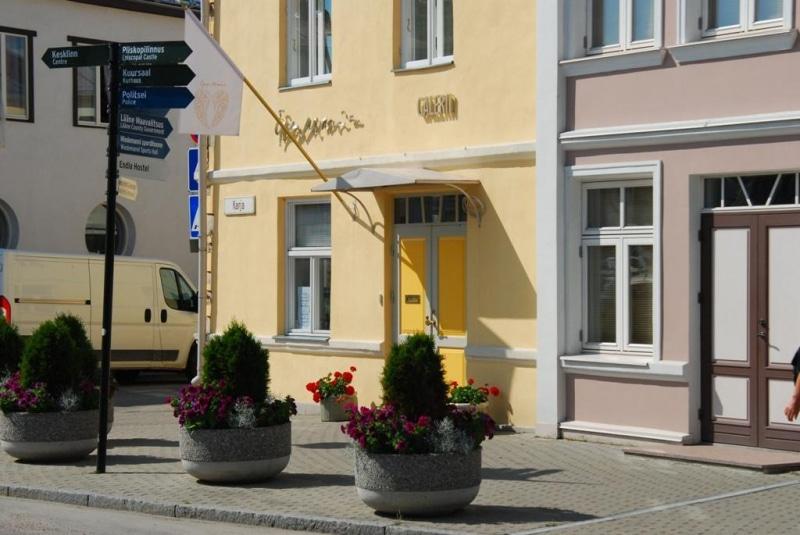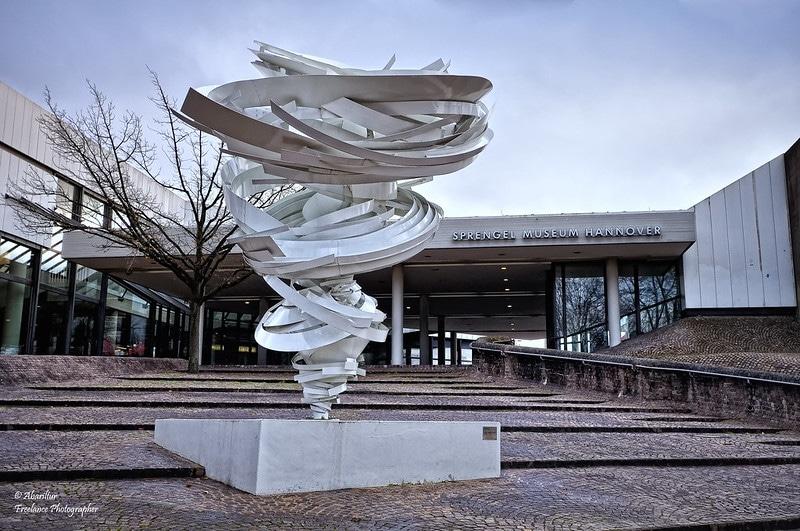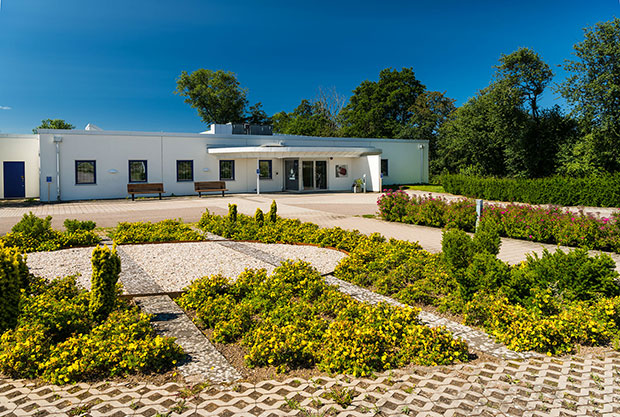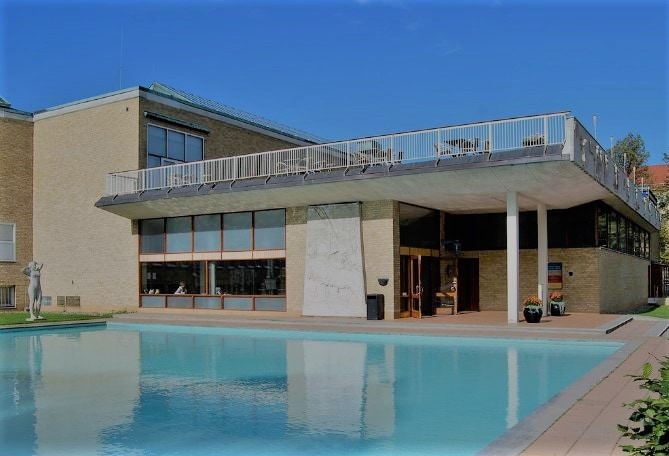ArtGalleries, Lviv
Removed from Unnamed collection
Andrey Sheptytsky National Museum
The Lviv National Museum, situated in the very beautiful building on Svobody Avenue, is one of the largest museums in Ukraine that features a considerable collection of Ukrainian visual arts. It was founded by the Greek Catholic metropolitan Andrey Sheptytsky, whose name it has now. Initially, it was a Church Museum and was aimed to develop Ukrainian national culture.
The core of the National Museum’s current exposition is its founder’s personal collection, numbering about 10 thousand valuable works of art. A quarter of a century later, the funds of the Lviv Museum had more than 80 thousand exhibits and now, there are almost 120 thousand works of visual arts. It houses country’s largest collections of Ukrainian icons, dated to the 14th – 18th centuries, and of medieval sacred and folk arts: sculptures, manuscripts, engravings, old printed books, pottery, bone and metal works.
National Museum’s pride is pictorial canvases by eminent Ukrainian artists: Ivan Trush, Oleksa Novakivsky, Kornil Ustiyanovich, Elena Kulchytska and others. The highlight of the museum's collection is a number of original works by Taras Shevchenko. Paintings by contemporary Lviv artists are exhibited here as well. https://discover-ukraine.info/places/western-ukraine/lviv/1361
Map
Explore more places related to this search:
Removed from Unnamed collection
Deri Museum
The Déri Museum is most famous for being the home of the greatest works of one of Hungary’s most famous and celebrated artists, Mihály Munkácsy, as well as the huge collection of other items, brought together by Frigyes Déri.
Munkácsy’s awe-inspiring Christ Trilogy is housed here, the first of the trilogy, entitled front of Pilate was painted in 1882, followed by Golgotha in 1884. The trilogy was completed with Ecce Homo in 1896.
In addition to its exhibits of local cultural interest, the Déri Museum has become renowned for Frigyes Déri’s collection of weapons.
The weapons collection is particularly fine, comprising of three parts. Weapons from Christian Europe, from the 15-18th. The second part is comprised of classic Muslim weapons from the territory of the Ottoman Empire and Persia. The third part, although the smallest is the finest part, is the weapons collection from the Far East.
The Japanese collection is of commonly used items made in the Edo era and is undoubtedly the best in Hungary. https://visitdebrecen.com/see-do/deri-museum/
Map
Removed from Unnamed collection
Warsaw National Museum
The museum houses a magnificent collection of over 830,000 exhibits from all periods, from antiquity to the present. Masterpieces of Polish and world art are presented in themed galleries. In the Faras Gallery you can see the largest collection of Nubian artefacts in Europe from the eighth to the fourteenth centuries, including a unique collection of wall paintings. They come from the flooded Christian cathedral at Faras in Sudan and depict divinities, dignitaries and saints.
Authentic 15th-century altars from various regions of Poland, Gothic sculptures and paintings for private prayer houses can be seen in the Gallery of Medieval Art. If you want to understand the role of art in the past, this is the place for you.
In the Gallery of Old Art, you will be transported to an era when painting and sculpture functioned on a par with crafts. Next to paintings and sculptures, you will see beautifully decorated furniture, fabrics and dishes, and even the coat and coronation insignia of the King Augustus III.
Don’t forget to check out the schedule of temporary exhibitions. http://warsawtour.pl/en/project/national-museum/
Map
Removed from Unnamed collection
Art Museum of Cluj-Napoca
The Art Museum of Cluj-Napoca is a public institution of a culture whose mission is to preserve, research and put forward the real and virtual patrimony of Romanian and universal art. With a collection of over 12,000 paintings, sculptures, graphic arts and decorative pieces, it is considered one of the most important museums in Romania.
Founded as an institution in 1951, the museum has been operating since 1956 in the Banffy Palace – a baroque building which was built based on the plans of the architect J.E. Blaumann during the years 1774-1785, its destination being that of residence for the governor of Transylvania. It is the most important baroque edifice in Cluj-Napoca and one of reference for the 18th-century Romanian architecture. A series of sculptures with remarkable artistic value made by Anton Schuchbauer were added to the building in order to complete its stone architectural decorations. http://www.visitclujnapoca.ro/en/atractii-turistice/muzee/the-art-museum-of-clujnapoca.html
Map
Removed from Unnamed collection
Arad Water Tower
The Water Tower is a building in the city of Arad, which resembles a medieval fortress donjon.
The Water Tower has 35 m height and was opened in 1896. At the time of construction, it was the tallest building in the city. It is a massive stone and brick building, which is characterized by the decoration of balconies and windows.
On the top floor, there is a water tank with a capacity of 400 tons, which you can get using the scale. http://www.uvisitromania.com/tourist-attractions/arad/water-tower-id546
Map
Removed from Unnamed collection
Theodor Pallady Museum
Theodor Pallady Museum is an interesting landmark for two reasons: it is housed by one of the oldest dwelling buildings in Bucharest, Malic House and here you can see the collection of more than 1700 items, valuable paintings but not only.
Theodor Pallady, one of the greatest Romanian painters, was born in 1871. He will study the Polytechnics in Dresda but soon will realize he was made for painting. In 1892 Theodor Pallady enters Gustave Moreau’s workroom in Paris where he will also meet Henri Matisse. It is in Paris where Pallady will become the friend of Gheorghe Raut whose guest will be a few years and who will also donate his collection, including Pallady’s works to the Romanian State. This happened in 1970. https://bucharest-travel.com/pallady-museum-bucharest/
Map
Removed from Unnamed collection
Bucharest History & Art Museum
If you are an art lover you should not miss this place. They have a permanent collection exhibiting historical artefacts and they always have a temporary exhibition bringing new items. Housed in the neoclassical Sutu Palace(1834), the museum features some 300,000 artefacts, from coins, books, maps, engravings, paintings, arms and furniture to old traditional costumes. Among the most valuable exhibits are the document attesting for the first time the name of the city of Bucharest, issued by Vlad Tepes in 1459. https://www.likealocalguide.com/bucharest/bucharest-history-art-museum
Map
Removed from Unnamed collection
Contemporary Art Museum Bucharest
The Contemporary Art Museum in Bucharest houses a great collection called Seeing the history from 1947 to 2007, which is an exhibition about the communist period, the progress of the Eastern European civilization, about the life of people in this period, including the Romanian Revolution in 1989 and the process of modernization of the country after the communists and the integration in the Euro-Atlantic civilization. Of course, the most important pieces of the collection are the art masterpieces exhibited, but the social, political and economical contexts are also explained on the first floor of the museum. There are also events organized here, like the recent one called The art condition in Russia and Eastern Europe in postmodern society, by an art historian Yunnia Yang from Taiwan. An impressive collection of photos made after masterpieces signed by great artists is also housed by the Museum. We are talking about 3 millions of copies in a digital archive. https://bucharest-travel.com/bucharest-contemporary-art-museum/
Map
Removed from Unnamed collection
Multimedia Visitor Centre Tsarevgrad Tarnov
Multimedia visitor centre “Tsarevgrad Tarnov” is located near Tsarevets hill. Notable sculptures and paintings present historical figures and events of the Second Bulgarian Kingdom. It recreates lives of different social layer in medieval bulgarian society – monarchs, clergy, boyars and warriors, craftsmen.
Visitors will experience the rich history of Tsarevgrad as a symbol of royalty, glory and spiritual power. http://www.velikoturnovo.info/en/info/i113/Multimedia-visitor-centre-Tsarevgrad-Tarnov.html
Map
Removed from Unnamed collection
Art Gallery Balchik
The Art gallery of Balchik was found in the thirties. At the beginning the gallery works together with the town museum. In 1961 a new museum collection was found. At the beginning there were only 76 works of art, donated by the National Art Gallery and by local people.
The nowadays art gallery was unveiled in 1987. It is settled in reconstructed former high school. The gallery occupies territory of 800 sq. meters. At the first floor there are four halls for temporary and visiting exhibitions and at the second floor there is constant exhibition. Nowadays the fund of the gallery is 1200 works. There can be seen all kind of paint art. Annually there are exhibitions, feasts. At the second floor, where is the constant exhibition, can be seen old and new Bulgarian art of painting and hall of graphic and sculpture. In this hall can be seen works from the “golden fund” of the Balchik Art gallery. Most of those works were exposed at the unveiling of the gallery. http://bgglobe.net/art-galleries/town-of-balchik/art-gallery--balchik-4988
Map
Removed from Unnamed collection
East Side Gallery
At 1316 metres long, the open-air art gallery on the banks of the Spree in Friedrichshain is the longest continuous section of the Berlin Wall still in existence. Immediately after the wall came down, 118 artists from 21 countries began painting the East Side Gallery, and it officially opened as an open air gallery on 28 September 1990. Just over a year later, it was given protected memorial status.
In more than a hundred paintings on what was the east side of the wall, the artists commented on the political changes in 1989/90. Some of the works at the East Side Gallery are particularly popular, such as Dmitri Vrubel’s Fraternal Kiss and Birgit Kinders’s Trabant breaking through the wall. They are not just a popular subject for postcards – you’re sure to want to photograph them yourself. https://www.visitberlin.de/en/east-side-gallery
Map
Removed from Unnamed collection
Sofia National Art Gallery
The National Art Gallery is the largest and the most representative museum of the Bulgarian fine arts in the country. It is housed in the building of the former royal palace (declared a cultural monument in 1978), together with the National Ethnographic Museum.
The beginning of the collection was set in 1892 when the art department of the National Archaeological Museum was established. In 1948 by resolution of the Council of Ministers, the National Art Gallery was established as an independent institution.
The exposition of orthodox arts is presented in the crypt of the monumental temple “St. Alexander Nevski” in Sofia. The collection of works of art covers a large period of time – from the adoption of Christianity as an official religion in the Roman Empire in the 4th century to the Age of Bulgarian Revival (18th – 19th century), and it mainly consists of icons.
The collections of contemporary and modern Bulgarian art of the museum – from the Liberation of Bulgaria from the Ottoman Dominion (1878) to the 1990s, contain more than 30,000 works of art, and they are divided into three basic expositions – high quality paintings, graphics and sculptures. https://www.bulgariatravel.org/en/Article/Details/262/National%20Art%20Gallery#map=6/42.750/25.380
Map
Removed from Unnamed collection
Museum of Modern and Contemporary Art Rijeka
The museum has its roots in the Fine Arts Gallery built in 1948. Six years later, in 1954, the 1954 Salon was founded - the Exhibition of Contemporary Sculpture and Painting in the Socialist Federal Republic of Yugoslavia (SFRY). This was the first group exhibition of the modern fine arts production of the former state. In 1960 it started the Biennale of Young Artists and in 1968 it presented the International Exhibition of Original Drawings. Since 1990 it has been presenting Croatian artists at the European and Mediterranean Biennale of Young Artists. In 1962 the institution changed its name to the Rijeka Modern Gallery and in 2003 to the Museum of Modern and Contemporary Art.
The Museum is working on a number of collections. These are collections of works by national artists Božidar Rašica, Romolo Venucci and Slavko Grčko, as well as collections of drawings, graphics, sculptures, posters, paintings, photographs and media art. The exhibition activities take place in Krešimirova Street. http://www.visitrijeka.eu/What_To_See/Museums_and_Collections/Museum_of_Modern_and_Contemporary_Art
Map
Removed from Unnamed collection
Atelje Vasko Lipovac
Gallery featuring contemporary sculpture, paintings & other works of the namesake artist.
Vasko Lipovac was a Croatian painter, sculptor, printmaker, designer, illustrator and scenographer and one of the most prominent artists of the region. He is best known for his minimalist figuration and use of intense, unmodulated and often dissonant palette. With the exception of his juvenile period of geometric abstraction, he remained loyal to figuration throughout his whole career. Exceptionally prolific, he worked in various techniques and was equally skilful in using high-polished metal, polychromous wood, enamel, terracotta or polyester to create his sculptures, reliefs and mobiles. http://www.vaskolipovac.com/
Map
Removed from Unnamed collection
Gallery Studio Naranca
Art Studio Naranča was founded in 1983 as a design studio of small arts and crafts objects. When the gallery moved in the bigger space at the beginning of the nineties in Majstora Jurja street at the heart of Split’s Diocletian palace we have expanded our activities by organizing exhibitions of Croatian and international contemporary artists.
International graphic art biennial “Splitgraphic” was established ten years ago in Studio Naranča gallery. Fifth “Splitgraphic” International Graphic Biennial was successfully organized in 2011. with participation and exhibitions of renowned Croatian and international artists.
In gallery Studio Naranča you can find the works of Pavo Majić, a graphic artist, his prints, paintings, designed items, Maja Mijač Majić’s unique jewellery, as well the books by Marina Majić and Pavo Majić. https://studionaranca.com/studio-naranca/
Map
Removed from Unnamed collection
Museum of Modern Art Dubrovnik
The Museum of Modern Art Dubrovnik was founded in 1945. The building now occupied by the Museum of Modern Art Dubrovnik was originally conceived and built (1935 – 1939) as the showcase residential mansion of Dubrovnik ship owner Božo Banac, and in 1948 it was converted into exhibition premises and museum. It was designed by the wellknown Croatian architects Lavoslav Horvat and Harold Bilinić in the neoRenaissancecumGothic style, along the lines of masterpieces of Dubrovnik urban and villa Renaissance architecture (the Rector’s Palace, the Divona/Sponza, the Sorkočević Villa and so on).
Through the conversion works, nine exhibition rooms were created, along with two storerooms and some smaller working areas. Together with the large terraces looking on to the sea and its garden, the Museum has 900 square metres of indoor and over 1100 square metres of outdoor exhibition space. https://www.godubrovnik.guide/dubrovnikthingstodo/museum-modern-art/
Map
Removed from Unnamed collection
Jaksic Gallery
Jaksić Gallery is located in the family yard, surrounded by the workshops of each author. In it, you can find the paintings of doctor of art Dina Jaksic, jewellery made of semiprecious stones combined with silver designed by Ida Jaksic, stone sculptures of the sculptor Lovre Jaksic, while the interior and exterior of the gallery are work of stonemasonry workshop which is in the property of Drazen Jaksic. He is not only a master of the craft but also a designer with the idea. The gallery also contains a number of useful items made of Brač stone and stone furniture which is an attraction itself. https://www.visitbrac.com/tours/jaksic-gallery/BR-TR-162
Map
Removed from Unnamed collection
Cultural History Museum Dubrovnik
The origins of the Museum go back to 1872, when the Patriotic Museum was founded, for in its holdings it had a smallish collection of artworks of a cultural history character. More systematic collection of material began after World War II, thanks to the urging of the curator and first manager of the cultural history department, Dr Božo Glavić, to whom goes the credit for moving the collection into the Rector’s Palace and setting up the first in situ display, opened to the public in 1950. During the course of time, the collection turned into first a distinct department of the Dubrovnik Museum, and then into the Cultural History Museum, a component of Dubrovnik Museums.
The holdings of the museum consist of material of distinctly cultural, historical and artistic value, with about ten thousand objects created over a time span from the end of the 15th to the beginning of the 20th century. It has been systematised into fifteen collections featuring painting, printmaking, furniture, textiles, ceramics, metals, icons, glass, photographs and photographic materials, miscellanea, documents, postcards, the writer Ivo Vojnović, old weaponry and numismatics. https://www.godubrovnik.guide/dubrovnikthingstodo/cultural-history-museum/
Map
Removed from Unnamed collection
Vapor Art Gallery
Vapor Art Gallery is lovely Korčula art space located in the very Sea Gate medieval Tower right next to Morska vrata town entrance. The gallery offers for sale large selection of major Croatian contemporary and modern artists including paintings by Stipe Nobilo, the local painter, Vasko Lipovac and others https://www.korculainfo.com/vapor-art-gallery/
Map
Removed from Unnamed collection
Hvaroom Gallery
Resembling an art studio or creative room which also serves as a living space, the gallery Hvaroom hosts exhibitions of Maja Jelušić and Ana Kolega. Over the last couple of years, it also featured photo exhibits of Ivo Vučetić, Filip Bubalo and Marko Jelušić. Apart from paintings and sculptures, the gallery also offers a variety of textile articles, author postcards and books. This crafty corner is situated in a stone Mediterranean house, grandma's 300 years old legacy semi-detached with one of the oldest theatres in Europe and Arsenal, former Venetian warehouse. Good, old grandma is still around, just like a cosy bar on the terrace Belvedere two floors above, opened on the previous location of Hvaroom, representing an additional exhibition venue of the gallery. In a thirteen years long art trajectory, the gallery has been recognized as a pleasant meeting place offering a variety of unique art products created out of love for the island’s hidden delights. The authentic interior is a melting pot of art, design and life’s little pleasures. Studio and gallery. Store and room…Hvar room. https://www.visit-hvar.com/tours/hvaroom-gallery/HV-TR-261
Map
Removed from Unnamed collection
Civic Museum Rovinj
Located in the baroque palace of the XVII / XVIII century of the Count Caliphs, the museum was founded in 1954 on the initiative of some artists of Rovinj. Their idea was to gather the rich cultural heritage of the city in a single exhibition space. The museum serves as a town gallery and exhibits its precious collection to the public in a permanent exhibition.
In its half-century of life it has gathered a rich collection that includes sections of contemporary art, old masters, archaeological, ethnological, books, documents and photographs on the activities of the partisan battalion Pino Budicin and more.
The Museum houses one of the most important collections of ancient masters in Croatia, in particular the Italian masters from the fifteenth to the nineteenth century. The Renaissance is represented through works by artists from the circle of Giovanni Bellini and Bonifacio de Pitatija (Adoration of the Magi), while the most important exponents of Baroque are Marco Ricci (On the road to Emmaus), Antonio Zanchi, Jerome Romanin, Nicola Grassi, the school of Guido Reni and Bernardo Strozzi and others. https://www.inforovinj.com/eng/rovinj/znamenje/zavicajni-muzej-rovinj.asp
Map
Removed from Unnamed collection
Rueki Gallery
Rüki Gallery is an exhibition and sales gallery of contemporary art in the Old Town of Viljandi.
The exhibitions organised both paintings and photography, graphics, sculpture, installations, and other alternative art. The purpose of the gallery is to introduce the works of Estonian professional artists to local residents, as well as visitors from Estonia and the rest of the world.
The gallery is housed in a historic barn building where a sign saying ‘Rüki jahu’ (rye flour in the local language) was found during renovation work. The sign indicated where flour was stored at that time. Hence the name of the gallery. https://www.visitestonia.com/en/ruki-gallery
Map
Removed from Unnamed collection
Malmoe Konsthall
Malmo Konsthall was opened in 1975 and is one of the Swedens largest spaces for contemporary art. Architect Klas Anshelm has created an exhibition with great flexibility, generous space and fantastic light. ” A large, low concrete box open on the park and the light of heaven ”, described Anshelm himself his creation. The construction materials are light and simple; concrete, glass, wood and aluminium. Most of the gallery has a roof built as a lattice of 550 light domes. The ceiling height varies. The light well – with higher ceilings – has large sloping skylight north. Klas Anshelm got the idea to construction when visiting the sculptor Constantin Brancusi’s Paris studio. The result is a gallery that is both functional and aesthetic. An exhibition space that the artist with endless.
Malmö Konsthall arranges annually a number of exhibitions with an international focus. https://www.konsthall.malmo.se/en/om-malmo-konsthall/
Map
Removed from Unnamed collection
Modern Art Museum Malmo
The Moderna Museet Malmö is a branch of the famous Swedish Museum of Modern Art in Stockholm. It is located in a converted former power station, within walking distance from the center of the old town of Malmö.
The former power station was built in 1901 as a brick building, the typical industrial architecture of its time. As part of the modernization, the building received an extension with a red-painted steel sheeting facade and in 2009 the Moderna Museet moved into the old power station.
The museum is specialized on Scandinavian and international art of the 20th and 21st century. The changing exhibitions throughout the year are attracting visitors from all around the world. The former turbine hall was converted as an exhibition room and covers an area of over 800 square meters. In addition, the museum also has an educational workshop of about 100 square meters.
The Moderna Museet is the only Scandinavian museum that features a significant collection of contemporary art of the 20th century. In its possession are works by Dali, Kandinsky, Matisse and Picasso. https://www.guidebook-sweden.com/en/guidebook/destination/moderna-museet-malmoe-museum-of-modern-art-in-malmoe
Map
Removed from Unnamed collection
Malmoe Art Museum
At Malmö Art Museum, you can discover Nordic contemporary art and wander through time and space showing the history and development of painting and furniture-making.
The museum hosts several important collections and historical donations, including the works of Carl Fredrik Hill (pdf, 375 kB) (1849-1911), whose pictures still evoke challenging thoughts on the human mind. The Herman Gotthardt collection (pdf, 101.8 kB) of Nordic modern 20th-century art is a highly important contribution to the understanding of the early production of Scandinavian modern art.
The Museum also has an extensive collection of furniture and handicraft, primarily from southern Sweden.
In the Malmö Art Museum's collections are significant Swedish and European ceramics from the 1400s until today. The collection of the Swedish and European Glass from the 1300s onwards, where the Swedish 29th-century glassworks are well represented, is of international interest. As the collection of Swedish and European silver, mainly Swedish silver from the Baroque to the designer Torun Bülow Hübe (1927-2004). There are also objects in the collection of textiles, pewter, brass and bronze that arouses interest. https://malmo.se/Uppleva-och-gora/Besoksmal/Malmo-Konstmuseum/Malmo-Art-Museum.html
Map
Removed from Unnamed collection
Correr Museum
The Correr Museum offers a real opportunity to know the Art and History of Venice. In the Napoleonic wing that was during the 19th century house of kings and emperors with their impressive neoclassical rooms, we find an important collection of works of one of the greatest sculptors of that time, Antonio Canova (1757-1822). In this museum we can also visit the New Magistrates, "Procuratie Nuove", which were designed between 1552-1616 by the architect Vincenzo Scamozzi and where once the most important civic authorities of the Republic of Venice were housed.
In these spacious rooms, currently there are collections that document various aspects of the city's history, such as public institutions, daily life, naval achievements and local festivals. On the second floor is the exhibition of the Art Collection covering the period from the beginning of Venetian painting to the 16th century; also here we can find other incomparable masterpieces. https://www.venice-museum.com/correr-museum-piazza-san-marco.php
Map
Removed from Unnamed collection
Accademia Gallery Museum
The Accademia Museum (Gallerie dell'Accademia) is part of a complex including the church of Santa Maria della Carità, the homonymous Scuola Grande (the original entrance is now the main access to the museum) and the Monastery of the Canonici Lateranensi (the complex was in use until the beginning of the XIX century).
The gallery take its name from the Accademia delle Belle Arti (Art Accademy) who opened the building and shared the sites until few years ago (2004).
The operas preserved inside the Gallery are many and of inestimable value. Most of the painting comes from a period between the XIV and the XVIII century, the most important authors are Carpaccio, Bellini, Tintoretto, Tiziano. Also many sculptures and drawing can be admired, amongst them the vitruvian man by Leonardo da Vinci, exposed only few periods. Initially the museum was operating as didactic and restoration of art operas centre. http://venice-tourism.com/en/places/dorsoduro-district/accademia-gallery-museum
Map
Removed from Unnamed collection
Epp Maria Gallery
The creative work of Epp Maria Kokamägi, one of Estonia’s most famous artists, includes oil paintings, watercolours, book design and theatre and film design. The building, which was built as a café during Estonia's first period of independence, now houses a gallery over two floors, where exhibitions change according to the seasons. In addition to Epp Maria's wonderful paintings, you can also enjoy the paintings and furniture created by her husband Jaak Arro, the ceramics of Liisu Arro and the paintings of Imbi Lind. https://www.visitestonia.com/en/epp-maria-gallery
Map
Removed from Unnamed collection
Sprengel Museum
The Sprengel Museum Hannover, which focuses on German Expressionism and French Modernist painting, is one of the most important museums of 20th and 21st-century art. It was founded after the collection of Dr. Bernhard und Margrit Sprengel was donated to the City of Hanover in 1969. The new building was opened in 1979. Works by Max Ernst, Paul Klee, Emil Nolde, Pablo Picasso and Kurt Schwitters, as well as by groups of artists such as Die Brücke and the Blauer Reiter set the scene. Art after 1945 is represented in an impressive fashion by works by artists ranging from Gerhard Richter to Bruce Nauman. A special attraction are the rooms designed by artists, including the reconstruction of Kurt Schwitters’ legendary ‘Merzbau’, El Lissitzky’s ‘Abstract Cabinet’ and James Turrell’s light spaces. Particular emphasis in the collection is placed on photography. The Sprengel Museum Hannover unites the collections of modern art in what was formerly known as the Städtische Galerie and the Landesgalerie. http://alfredflechtheim.com/en/provenance-research/sprengel-museum-hannover/
Map
Removed from Unnamed collection
Mjellby Art Museum
At the Mjellby Art Museum, there is a large collection of art from the Halmstad group. It makes it possible to show exhibitions that illustrate their pioneering work in Swedish art history in the 1920s and 1930s, but also provide new insights and lesser-known perspectives on the group's history.
The museum also exhibits temporary exhibitions focusing on modernism and its various tracks. The Museum often use topics such as gender, norms, society and politics when produce exhibitions - not infrequently in collaboration with different researchers. Over the years it has published several art books linked to its exhibitions.
Mjellby Art Museum has a special assignment to work with surrealism. Here, of course, the Halmstad group's surrealism is at the center, but it also interested in the branches of art direction nationally and internationally. https://www.halmstad.se/upplevagora/konstochmuseer/mjellbykonstmuseum/omoss.23758.html
Map
Removed from Unnamed collection
Norrkoping Art Museum
The main focus is on Swedish modernism. The museum also has a graphics collection that is one of the largest in the country. Exhibitions at the museum are thematic or focus on the oeuvres of individual artists while also linking them to international contemporary art.
Museum Collection is always available in 3 galleries. https://upplev.norrkoping.se/en/item/konstmuseet
Map
Removed from Unnamed collection
Galleri Melefors
Galleri Melefors offers art from both inside and outside Sweden, in close collaboration with the art market, artists, private individuals, companies and art associations. It also, organise a number of separate exhibitions and vernissages annually. https://visitlinkoping.se/en/g%C3%B6ra/attraktioner/konsthallar-och-gallerier/galleri-melefors
Map
Removed from Unnamed collection
Ostergotlands Museum
The museum features a variety of cultural treasures of all kinds. One of the treasures is a painting depicting Adam and Eve, by the German artist Lucas Cranach the Elder. When the painting came to the museum after an auction in the late 1800s had been hanging on an outhouse in Sjögestad. The museum's cultural exhibition includes skeletons of Bergsrondellen and the PC historical exhibition Digital dreams about the Internet's emergence, the gaming industry and the computer in art. Moreover, there are always different exhibitions with various themes such as contemporary art, fashion and design, photography and current social issues. https://visitlinkoping.se/en/do/attractions/museums/%C3%B6sterg%C3%B6tlands-museum
Map
Removed from Unnamed collection
Tretyakov Gallery
The Tretyakov Gallery is the main museum of Russian national art, reflecting its unique contribution to world culture. It is a hospitable museum that is known for its rich collection and variety of presented ideas. Check out the best works of Russian art from different eras and authors. On Currently the collection includes more than 180 000 pieces and is regularly updated. The Collection presents major masterpieces from the permanent exhibition.
Also visit The New Tretyakov Gallery which presents the most completed in our country permanent exhibition of the art of the 20th century in all its diversity - avant - garde, socialistic realism and art of the "austere style" and "underground" and some new art trends. Here are held not only large-scale retrospectives of great Russian artists, but also showed experimental exhibitions of young authors. A lecture - hall and a creative workshop offer a wide range of theoretical knowledge and practical trainings about the art of the 20th and early 21st century for children, students and adults. https://www.tretyakovgallery.ru/en/
Map

